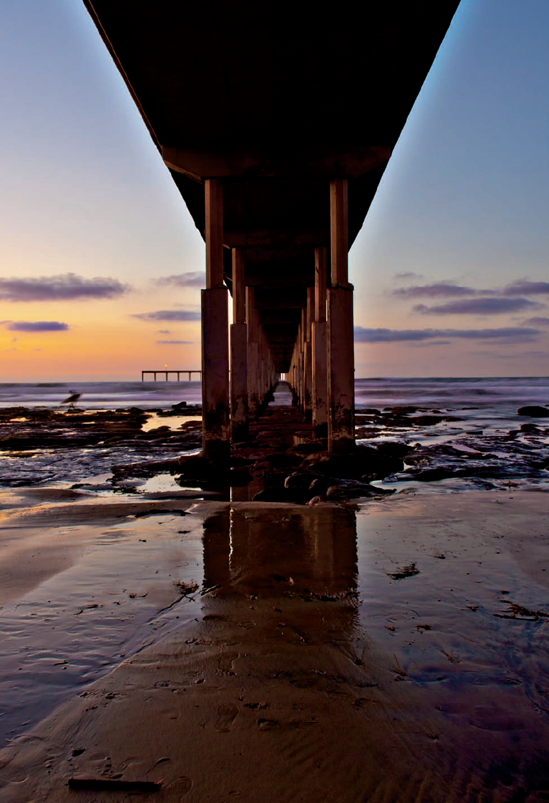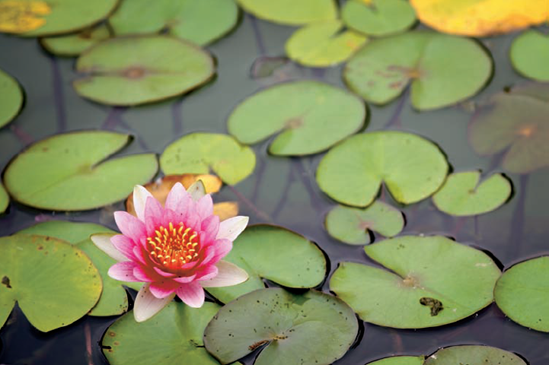Chapter 2. Light and Exposure

No book on photography would be complete without discussing the basics of light and exposure. It is important to understand how light creates your photos, the direction and color of the light, as well as the different options you have to control exposure. Knowing how to select the right combination of shutter speed, aperture, and ISO, and understanding what effect they each have on your image will let you concentrate on the actual composition. Getting the right composition but the wrong exposure can ruin an otherwise great image.

Taken in the early morning as the sun started to light the plants in the pond. The exposure was determined by the built-in light meter in the camera. Taken at ISO 200, f/4.5, and 1/250 second.
Light
Photography is all about capturing the light; actually, photo is from the Greek word for light. The camera's sensor captures the light that is reflected off of your subject.
Direction of light
Light has to come from somewhere, like the sun or a flash mounted on a camera. This means that the light that is illuminating your subject has direction, which determines where the shadows in your scene fall. The shadows are what give the scene depth (see Figure 2.1). If all the lighting is perfectly even, then your scene will have no depth and will ...
Get Composition Digital Field Guide now with the O’Reilly learning platform.
O’Reilly members experience books, live events, courses curated by job role, and more from O’Reilly and nearly 200 top publishers.

